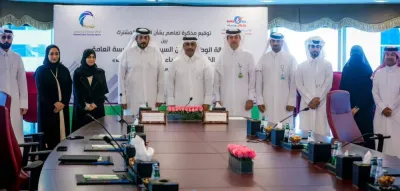Middle Eastern electricity demand will more than double to 2,419TWh by 2040 demonstrating a growth rate of 3.2% a year, according to the Doha-based Gas Exporting Countries Forum (GECF).
Driven by the rapidly growing Gulf Cooperation Council countries, the power demand in the region grew substantially between 2000 and 2016 from 472TWh (terawatt hours) to 1,132TWh, indicating an average growth rate of 5.6% a year, it said.
Population increases, economic growth, and improvements in the level of living standards due to higher urbanisation have been the main drivers for increased electricity demand.
The GECF estimates that natural gas will play a key role in the Middle East countries’ power generation mix. Over the outlook period, natural gas will ultimately achieve a share of 73% in the power generation mix.
However, consistent with other regions across the world, the GECF noted these countries are also planning to develop renewables usage to offset the finite nature of fossil fuels. It is expected that by 2040, renewables will constitute a share of 10% of the region’s generation mix. This compares to oil’s share, which will drop substantially from 30% in 2016 to 12% in 2040.
As the main regional contributor, Iran’s electricity demand grew 137% between 2000 and 2016, rising from 121TWh to 286TWh. It is expected that by 2040, demand will continue to grow; reaching 664TWh.
Gas generated more electricity than other fuels in 2016, accounting for 70% of Iran’s electricity generation, while oil contributed 22%, and hydro only 6%. Iran is interconnected with Afghanistan, Armenia, Azerbaijan, Iraq, Pakistan, Turkey, and Turkmenistan, and is a net electricity exporter.
Over the historical period, the demand for electricity in the GECF member countries was boosted from 1,261TWh in 2000 to 1,937TWh in 2016, demonstrating an annual average growth rate of 2.7%.
Over the forecast period, it is expected that electricity consumption will increase to 3,402TWh, indicating a growth rate of 2.4% by 2040, the GECF said. Increased urbanisation, economic development and population increases which stoke demand in the domestic sectors are the key drivers for such an increase.
Most GECF members are developing countries (e.g. Qatar, Russia, Iran, UAE), with economic growth potential over the next decades. The other members of the forum are Algeria, Bolivia, Egypt, Equatorial Guinea, Libya, Nigeria, Trinidad and Tobago and Venezuela.
Azerbaijan, Iraq, Kazakhstan, the Netherlands, Norway, Oman and Peru have the status of Observer Members.
OECD Asia-Pacific (2,253TWh), CIS (1,869TWh), Africa (1,712TWh), and non-OECD Europe (2,91TWh) are the next largest electricity consumers over the outlook period.
These regions will experience growth rates of 0.8%, 0.9%, 3.4% and 1.4% a year respectively, the GECF said in its 2017 global gas outlook.

Electricity pylons carry power lines across Tochal mountain in Tehran. As the main regional contributor, Iran’s electricity demand grew 137% between 2000 and 2016, rising from 121TWh to 286TWh. Demand will continue to grow, reaching 664TWh by 2040, according to GECF.



